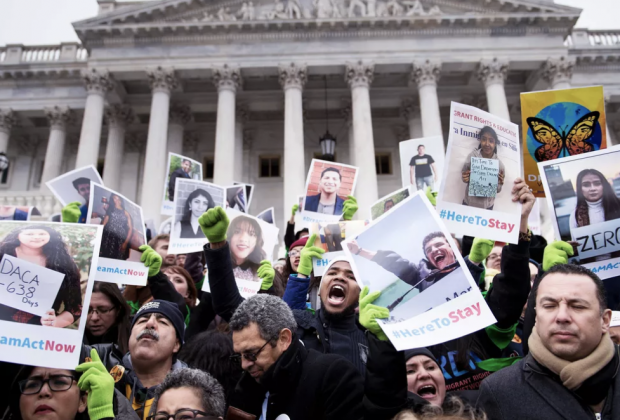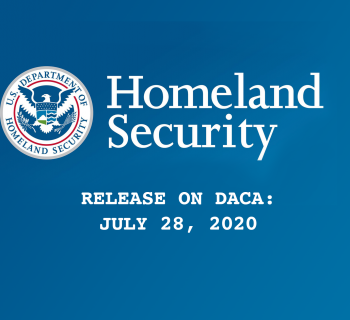By: The CAP Immigration team ~ CAP ~ November 12, 2019
“The Trump Administration’s Plot To End DACA Faces a Supreme Court Test” by Jonathan Blitzer, The New Yorker, November 10, 2019
Over the past two years, the Trump administration’s efforts to end the Deferred Action for Childhood Arrivals (DACA) program have been described as cruel, shortsighted, and counterproductive. Days before the oral arguments, Ted Olson—the solicitor general under former President George W. Bush and conservative legal stalwart who argued the case against the administration—described the termination effort in terms the Supreme Court justices will surely understand: “The DACA case ‘is a rule-of-law case’.”
Olson’s point, similar to arguments made by constitutional law professor Garrett Epps and immigration attorney David Leopold, is that while presidential administrations are often free to change the policies of previous administrations, they must do so in accordance with the law. Under the Administrative Procedure Act (APA), changes in policy must be the result of a reasoned decision-making process—one in which the administration builds a record considering carefully all aspects of the underlying policy and the proposed change—rather than an “arbitrary and capricious” judgment. When a court rules that an administrative action runs afoul of the procedural requirements of the APA, that does not mean the court believes the administration does not have the authority to change the policy, but rather that the administration did not follow the procedures required by law.
Earlier this term, the Supreme Court rejected the administration’s attempt to add a citizenship question to the 2020 U.S. census, finding that the Department of Commerce’s stated explanation for the change was inconsistent with the totality of the evidence in the record. The court did not rule that adding such a question necessarily would be unlawful, but rather that doing so would require a genuine and reasoned explanation that could be scrutinized properly by the courts and the public.
A similar outcome is warranted in the DACA case, because the administration failed to articulate and defend its real reasons for ending the program and instead constructed a rationale based on the dubious idea that instituting DACA was an illegal exercise of authority by the previous administration. The administration only summarily articulated the outlines of a purportedly separate policy justification in a memorandum prepared by then-Secretary of Homeland Security Kirstjen Nielsen—nine months after the decision to end DACA already had been made and announced publicly.
No one is arguing that the Trump administration is required to keep the DACA program in place. But when considering major policy changes that would upset the settled expectations of nearly 700,000 program beneficiaries—not to mention the more than 250,000 U.S.-citizen children who have at least one parent protected by the program—the administration must comply with the law. At the end of the day, it falls to the nine justices of the Supreme Court to uphold the rule of law, particularly when faced with an administration that is committed to doing anything but.
Source: The CAP Immigration team ~ CAP ~ November 12, 2019







